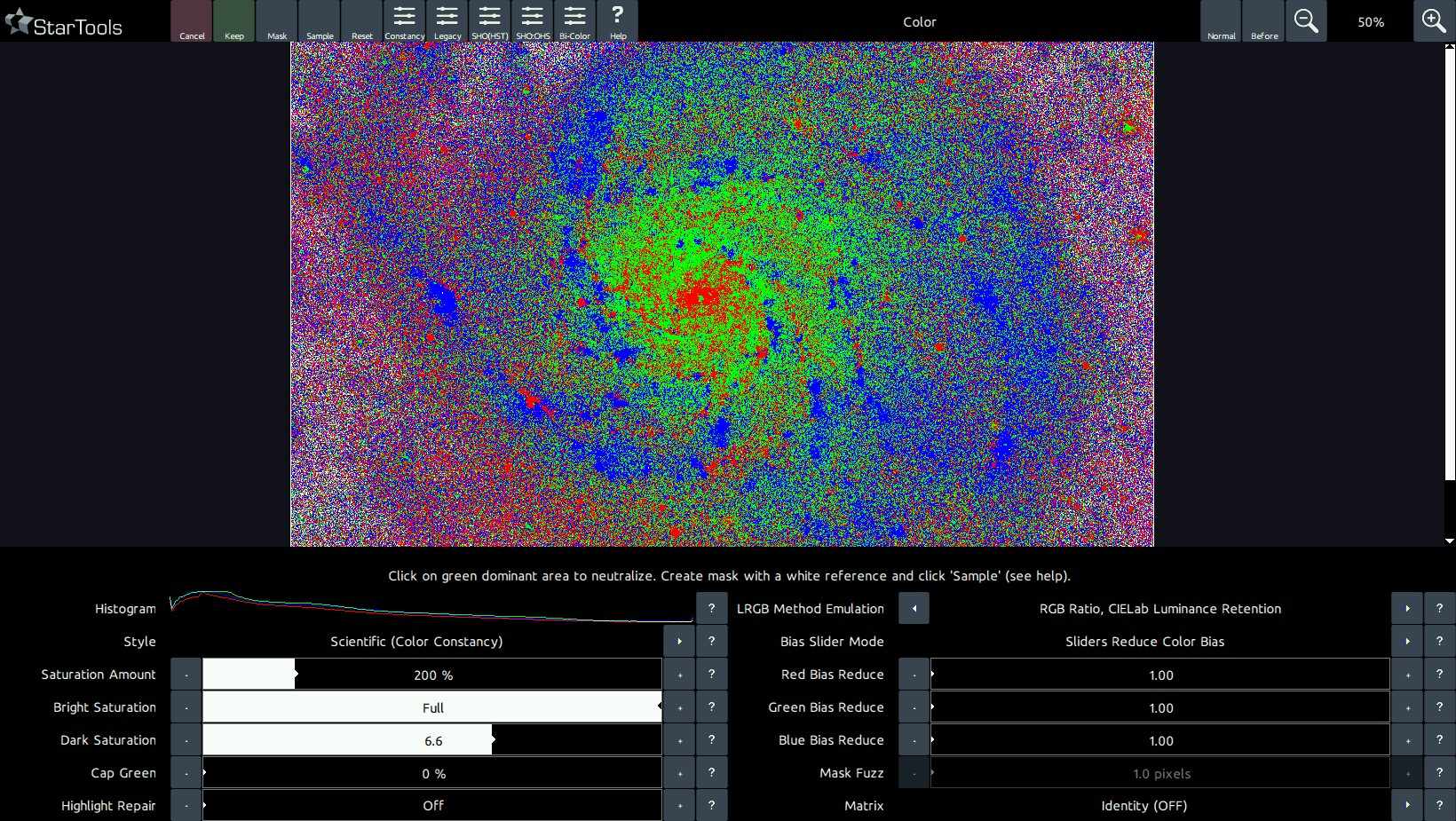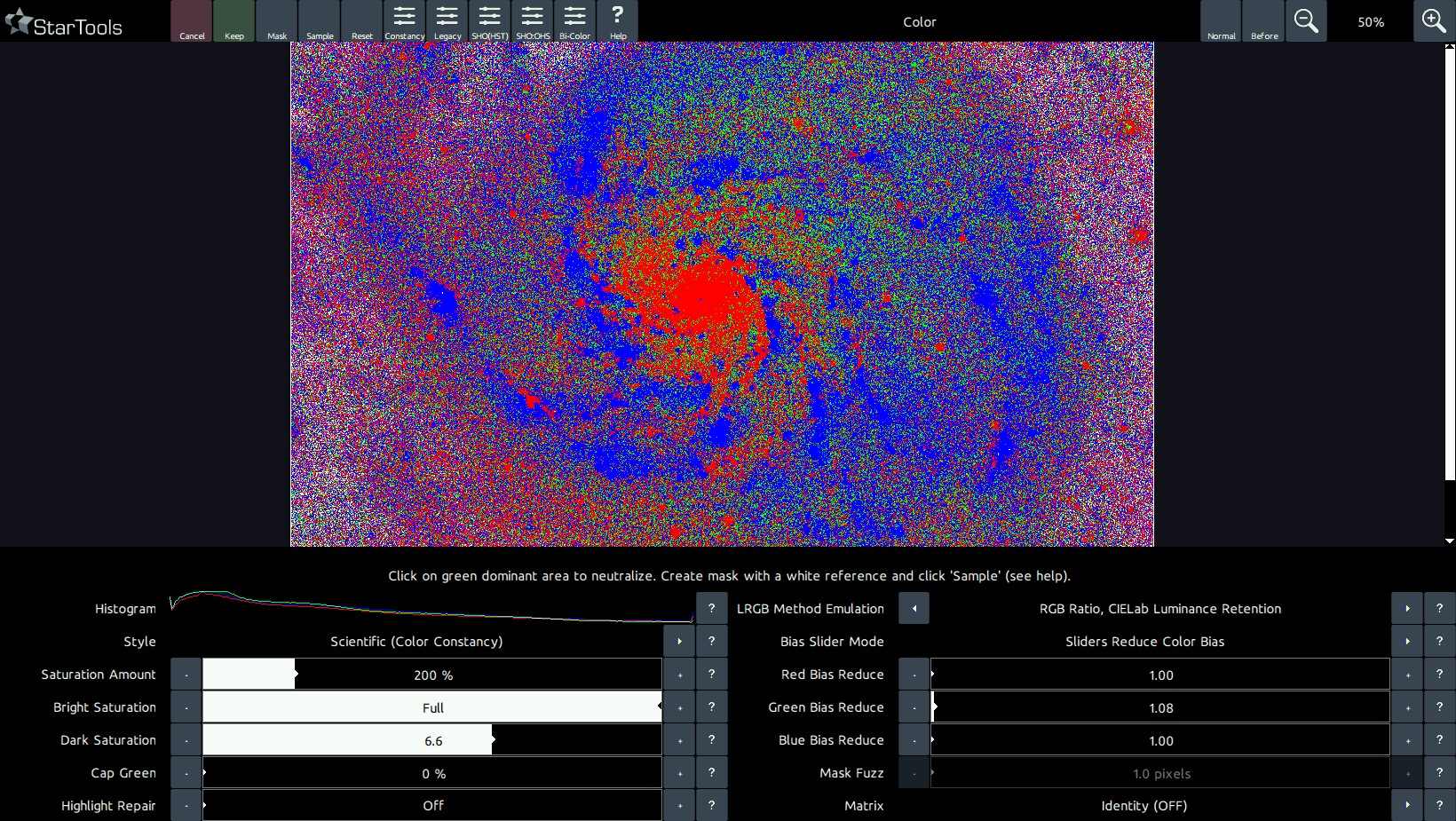- How to determine a good color balance
- MaxRGB Mode
White balancing in MaxRGB mode

StarTools comes with a unique colour balancing aid called MaxRGB. This mode of colour balancing is exceptionally useful if trying to colour balance by eye, but the user suffers from colour blindness or uses a screen that is not colour calibrated very well. The mode can be switched on or off by clicking on the MaxRGB mode button in the top right corner.

The MaxRGB aid allows you to view which channel is dominant per-pixel. If a pixel is mostly red, that pixel is shown red, if a pixel is mostly green, that pixel is shown green, and if a pixel is mostly blue, that pixel is shown blue.
By cross referencing the normal image with the MaxRGB image, it is possible to find deficiencies in the colour balance. For example, the colour green is very rarely dominant in space (with the exception of highly dominant OIII emission areas in, for example the Trapezium in M42).

Therefore, if we see large areas of green, we know that we have too much green in our image and we should adjust the bias accordingly. Similarly if we have too much red or blue in our image, the MaxRGB mode will show many more red than blue pixels in areas that should show an even amount (for example the background). Again we then know we should adjust red or green accordingly.
Clicking on an area to neutralise green
A convenient way to eliminate green dominance is to simply click on an area. The Color module with adjust the 'Green Bias Reduce' or 'Green Bias Increase' in response so that any green dominance in that area is neutralised.
You may also be interested in...
- Introducing StarTools
By tracking signal and noise evolution during processing, it lets you effortlessly accomplish hitherto "impossible" feats.
- Video (under Quick Start)
A video is also available that shows a simple, short processing workflow of a real-world, imperfect dataset.
- White point reference by mask sampling (under How to determine a good color balance)
To apply the new colour balance to the whole image, launch the Mask editor once more and click Clear, then click Invert to select the whole image.
- Setting a colour balance (under Usage)
The 'Red, Green and Blue Increase/Reduce' parameters are the most important settings in the Color module.
- Touchscreen (under Interface)
StarTools can also be entirely operated by touchscreen with all controls appropriately sized for finger-touch operation.
